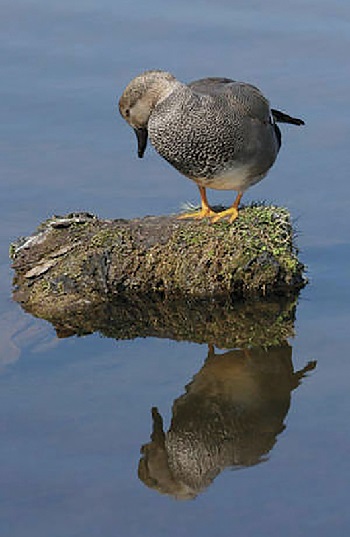 Opalescent skies brightened under the rising sun. A soft wind ruffled the waves lapping the cove, which was alive with countless waterfowl. The birds were waking, filling the morning sky with a cacophony of honks and quacks, along with softer whistles and burbles.
Opalescent skies brightened under the rising sun. A soft wind ruffled the waves lapping the cove, which was alive with countless waterfowl. The birds were waking, filling the morning sky with a cacophony of honks and quacks, along with softer whistles and burbles.
There were almost too many to count. The winter waterfowl had arrived in huge flocks at Eastern Neck Wildlife Refuge near Rock Hall, MD, and the birding was terrific.
In late December 2015, an explosion of waterfowl had crowded the waters here with an abundance that mirrored the bounty of the Chesapeake centuries ago. Counts were in the hundreds and even thousands for individual species before the birds began to disperse across the watershed.
Today’s birding wasn’t quite as stunning, but the numbers were still impressive.
My focus was on a raft of ducks that had congregated along the far edge of Calf Pasture Cove. The birds were a winter’s palette of brown and gray, black and white, with no distinguishing flash of color to help with the identification.
Gadwalls (Anas stepera) are often overlooked by beginning birders because of their subdued coloration. But closer inspection reveals a bird with intricate patterns that are captivating in their own right.
The females look like mallards, but have a white patch where the mallard hen shows a blue speculum. The bills were dark, edged in yellow, unlike the female mallard’s mottled, wider bills.
The males are a complex pattern in neutral colors. The buff head has a darker cap and a white chin. The chest is a densely scalloped black on white. It gives way to a body of a lighter speckled gray until it ends in a jet black rear. The short tail is brown. The wings are tan with gray-white tips.
These handsome, understated birds are one of the most common duck species in the Chesapeake.
Like its close cousin the mallard, the gadwall is a dabbler, a bird that goes “bottoms up” to access underwater vegetation. They eat algae, widgeon grass, pondweed, rushes and the like. They also feast on newly dropped leaves. What they can’t reach they sometimes steal from diving birds like coots.
Gadwalls breed in the prairie pothole region of the U.S. Midwest and central Canada. Some birds go all the way to the tundra. A permanent population lives in the Pacific Northwest and coastal California.

During winter, migratory gadwall can be found in the Chesapeake watershed and west and south to Texas and down into Mexico.
They are usually found around the shallow ends of reservoirs, marshes and lakes. They prefer coastal areas, and the Chesapeake is a favorite winter locale.
Male and female gadwalls start pairing off in the fall and spend the winter and breeding season as couples. Next year, they will look for new mates.
Although vegetation constitutes the vast majority of a gadwall’s food, the female will switch to a diet heavy in protein-rich invertebrates like snails and water beetles during breeding.
She will lay 7–12 eggs, one per day, then incubate the clutch for 24–27 days. The chicks emerge ready for action. They leave the nest after just a day or two.
A number of predators can hit broods hard. From above, ring-billed gulls and northern harriers will dispatch young gadwalls, given the chance. The species is also attacked by land-based creatures ranging from foxes and mink to badgers and coyotes.
Gadwalls are favorites for duck hunters, too. More than a million are taken annually, yet the population is stable and the species continues to expand its range in the eastern United States.
Amid the noise at Calf Pasture Cove, we couldn’t hear the softly burped “meep” from the gadwalls, but surely they were contributing to the din.
As I lowered the binoculars, I took in the larger scene. Scores of tundra swans were at the mouth of the cove. Closer in were hundreds of ducks, including scoters, redheads, teal and black ducks.
When we drove over the little bridge coming into the refuge minutes ago, we had seen impressive numbers of waterfowl in Tubby’s Cove as well. Before the morning was over, we would add bald eagles, woodpeckers, hawks and songbirds to our tally.
As we headed off the refuge and toward a steaming cup of coffee in Rock Hall, I reflected on the beauty and bounty of this special place. With careful cultivation, the refuge was living up to its mission of providing needed food and shelter to all of the birds that came to its welcoming shores.
Then I wondered why we find it so hard to open our hearts to those human refugees around the world looking for safety and sustenance. The glory of Eastern Neck is its diversity as much as it is its abundance. Surely there is a lesson here for all of us.
